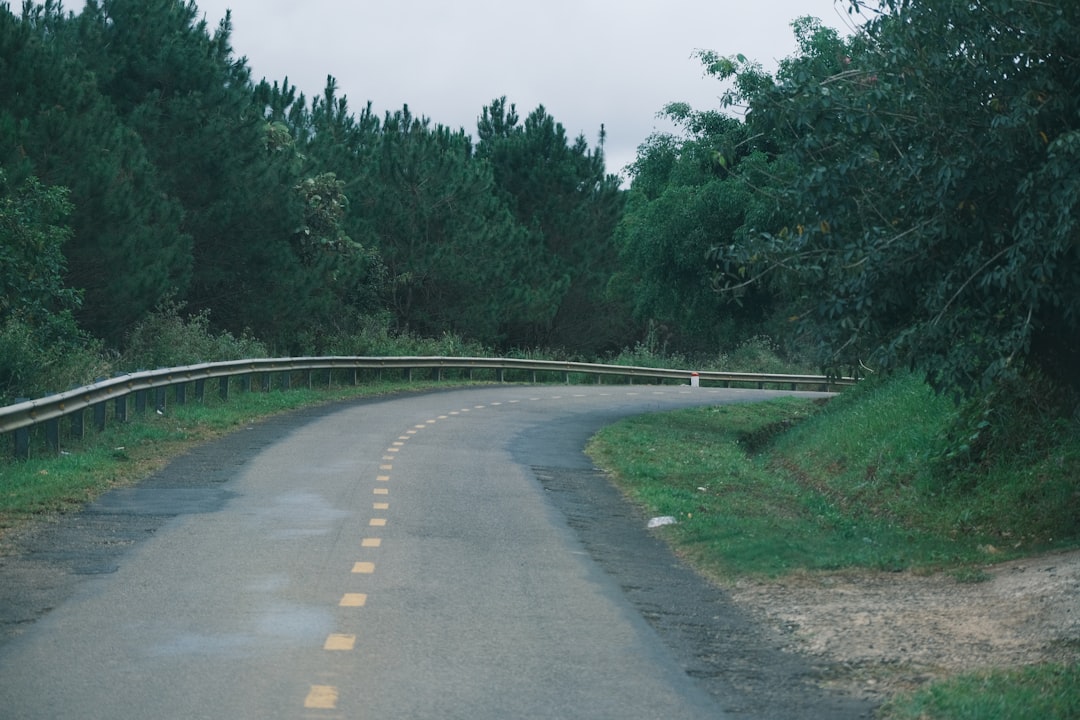From Beaches to Mountains Ideal Nomad Locations and Tools

Introduction
The modern nomad is no longer confined to a single desk, a fixed office, or even a single climate. With reliable internet, portable power solutions and a global community of remote workers, the world has become a series of interchangeable workspaces. From the rhythmic lull of waves against a palm‑lined shore to the crisp, pine‑scented air of a high‑altitude chalet, each environment offers its own rhythm, inspiration and set of practical challenges.
Choosing the right location is only half of the equation. The other half is equipping yourself with tools that let you stay productive, comfortable and safe wherever you set up camp. This guide walks you through some of the most compelling beach and mountain destinations for digital nomads, and then dives into the essential travel gear, tech gadgets and practical tips that turn a fleeting stay into a sustainable, enjoyable lifestyle.
Beach‑Centric Nomad Hotspots
Bali, Indonesia
Bali remains a magnet for remote workers because it blends affordable living, a thriving expat community and a landscape that shifts from surf‑ready beaches to terraced rice paddies within a short drive. The town of Canggu is especially popular, offering coworking spaces such as Dojo and Outpost, reliable 4G coverage, and a steady supply of vegan cafés with plug‑in friendly tables.
Why it works for nomads
- Consistent high‑speed internet in most cafés and coworking hubs.
- Low cost of living; a comfortable apartment with a sea view can be rented for under $800 per month.
- A strong network of digital‑nomad meet‑ups, yoga studios and surf schools that keep the social calendar full.
Lisbon’s Cascais Coast, Portugal
Just a 30‑minute train ride from Lisbon’s historic centre, Cascais offers a blend of European charm and Atlantic breezes. The town’s marina, golden sands and pastel‑coloured houses provide a relaxed backdrop for focused work sessions. The proximity to Lisbon means you can tap into the city’s extensive public transport, cultural events and international airport without sacrificing beach life.
Why it works for nomads
- Fiber‑optic internet reaches most residential buildings, delivering speeds above 100 Mbps.
- The cost of a one‑bedroom apartment in Cascais sits at a midpoint between Lisbon and more remote coastal towns, offering a balanced price‑quality ratio.
- A vibrant expat community that hosts regular hackathons, language exchanges and beach clean‑up events.
Tulum, Mexico
Tulum’s reputation as a bohemian oasis is matched by a growing infrastructure for remote work. Boutique hotels such as Casa Malca and coworking venues like Bunker host reliable Wi‑Fi, ergonomic furniture and a laid‑back vibe that encourages creativity. The surrounding jungle and cenotes add a sense of adventure for those who need a break from the screen.
Why it works for nomads
- Solar‑powered coworking spaces reduce reliance on the grid, aligning with eco‑conscious values.
- The availability of short‑term rentals ranging from hammocks to luxury villas means you can scale your living space as your budget changes.
- A thriving culinary scene that highlights fresh seafood, locally sourced vegetables and traditional Yucatecan dishes.
Gold Coast, Australia
The Gold Coast stretches for 70 kilometres of surf‑lined shoreline, offering a mix of high‑rise apartments, beachfront hostels and purpose‑built digital‑nomad hotels. The city’s robust 5G rollout ensures that even a coffee shop on Surfers Paradise can provide a stable connection for video calls and large file uploads.
Why it works for nomads
- Strong public transport network, including light rail that links the beach precinct to the central business district.
- A range of coworking spaces such as The Cove and WOTSO that cater to different work styles, from quiet pods to collaborative zones.
- An active outdoor lifestyle, with surf schools, mountain‑bike trails and national parks all within an hour’s drive.
Koh Lanta, Thailand
For those who prefer a quieter, less tourist‑heavy beach, Koh Lanta offers a slower pace without sacrificing the essentials. The island’s main town, Ban Saladan, houses several coworking cafés that serve reliable 4G connections via local providers like AIS and TrueMove. The low cost of living means a modest studio can be rented for under $300 per month, leaving plenty of room for savings or travel.
Why it works for nomads
- A community of long‑term travelers who share tips on visa extensions, equipment rentals and local services.
- The island’s extensive network of mangrove forests and marine reserves provides a natural escape for weekend hikes and snorkeling trips.
- A growing number of eco‑lodges that incorporate solar panels, rainwater collection and composting toilets.
Mountain‑Focused Nomad Destinations
Medellín’s Valle de Aburrá, Colombia
Although not a mountain in the traditional sense, Medellín sits in a valley surrounded by the Andes, offering year‑round spring‑like weather at an altitude of 1,500 meters. The city’s “digital nomad visa” and an expanding network of coworking spaces like Selina and Atom House make it an attractive base for those who thrive in an urban‑mountain environment.
Why it works for nomads
- Fast fiber connections throughout the city, often exceeding 200 Mbps.
- A vibrant cultural scene, with museums, street art and music festivals that keep the creative spark alive.
- Affordable housing; a modern apartment in El Poblado can be secured for around $900 per month.
Chiang Mai, Thailand
Nestled in the foothills of the Himalayas, Chiang Mai has long been a magnet for freelancers, writers and designers. The city’s low cost of living, plentiful coworking spaces such as Punspace and CAMP, and a reliable 4G network create a perfect environment for sustained remote work.
Why it works for nomads
- A thriving “maker” community that hosts regular workshops on 3D printing, electronics and digital art.
- The surrounding mountains offer trekking routes to Doi Suthep, Doi Inthanon and numerous hidden waterfalls.
- A rich culinary tradition featuring night markets, cooking schools and street‑food tours.
Lake Tahoe, United States
Straddling the California‑Nevada border, Lake Tahoe provides a dramatic alpine setting with crystal‑clear waters, ski resorts and year‑round outdoor activities. While the cost of living is higher than many traditional nomad hubs, the region’s high‑speed broadband, numerous coworking locations in Reno and the ability to work from a cabin with a lake view make it a premium choice for those who value nature and performance.
Why it works for nomads
- Gigabit fiber connections available in most residential areas and dedicated coworking hubs like the Reno Riverwalk Workspace.
- Seasonal activities ranging from snowboarding in winter to paddle‑boarding and hiking in summer.
- A supportive community of remote‑work entrepreneurs who organize meet‑ups, tech talks and wellness retreats.
Innsbruck, Austria
Set against the backdrop of the Tyrolean Alps, Innsbruck blends historic charm with cutting‑edge infrastructure. The city’s universities, research institutions and thriving tech startup scene foster an environment where digital professionals can network and collaborate. High‑speed internet, public transport passes that cover trams, buses and mountain railways, and a plethora of mountain huts make it easy to balance work and alpine adventure.
Why it works for nomads
- Federal broadband initiatives guarantee speeds of at least 100 Mbps in most apartments.
- Easy access to ski resorts such as Axamer‑Lizum and Nordkette via a short train ride.
- A multicultural population that speaks English fluently, easing daily interactions for expats.
Pokhara, Nepal
Located at the base of the Annapurna range, Pokhara offers a tranquil lake setting, spectacular mountain vistas and a growing community of remote workers. While the internet infrastructure is still developing, many cafés now provide stable 4G connections, and a handful of coworking spaces like Kathmandu Kitchen have begun installing fiber backbones.
Why it works for nomads
- Inexpensive accommodation; a comfortable one‑bedroom flat can be rented for under $400 per month.
- Direct access to trekking routes that lead to Annapurna Base Camp, making it ideal for long‑term adventure seekers.
- A relaxed pace of life that encourages mindfulness practices such as yoga, meditation and sunrise walks along Phewa Lake.
Bridging Beach and Mountain: Hybrid Nomad Locations
Not every nomad wants to choose strictly between sand and snow. Several destinations sit at the intersection of coastal and mountainous terrain, offering the best of both worlds.
- San Diego, California – The city’s coastline meets the rugged cliffs of Torrey Pines and the nearby Laguna Mountains, providing endless surf, hiking trails and a thriving tech ecosystem.
- Valparaíso, Chile – This UNESCO‑listed port city boasts colorful hillsides, a vibrant arts scene and easy access to the Andes for weekend ski trips or mountain biking.
- Nice, France – The French Riviera’s azure waters are just a short train ride away from the Alpine foothills of the Mercantour National Park, allowing for a seamless transition from beach cafés to alpine lodges.
These hybrid locales often have robust public transportation, multiple coworking options and a diverse expatriate community, making them ideal for nomads who crave variety without the hassle of frequent relocation.
Core Travel Gear Every Nomad Needs
Choosing the right gear can be the difference between a smooth remote‑working experience and a constant battle with logistics. Below is a curated list of essential items, grouped by purpose and ranked by versatility.
Backpack or Travel Bag
A sturdy, well‑organized bag is the foundation of any nomadic lifestyle. Look for the following features:
- A main compartment of at least 30 liters for clothing and personal items.
- A dedicated laptop sleeve with padding that fits a 15‑inch device.
- Quick‑access front pockets for travel documents, a power bank and a reusable water bottle.
- Water‑resistant fabric and lockable zippers for security.
Popular models include the Osprey Farpoint 40 for its comfort and durability, and the Peak Design Travel Backpack for its modular interior.
Portable Power Solutions
Power outages, mismatched outlets and long travel days make reliable electricity a top priority.
- Power bank – A 20,000 mAh battery with USB‑C Power Delivery can charge a laptop, phone and tablet in a single session.
- Universal travel adapter – Choose a model with surge protection and USB ports; the EPICKA 5‑in‑1 adapter covers over 150 countries.
- Solar charger – For beach or mountain stays where grid access is limited, a foldable 10‑watt solar panel can keep small devices topped up during daylight hours.
Clothing Essentials
When moving between climates, layering is key. Pack items that are lightweight, quick‑dry and versatile:
- A breathable, waterproof shell jacket that can double as a windbreaker on the coast.
- Merino wool base layers for cooler mountain evenings; they regulate temperature and resist odor.
- Convertible pants that zip off into shorts, ideal for hiking, city walks or beachside coffee sessions.
Health and Safety Kit
- A compact first‑aid kit with bandages, antiseptic wipes, pain relievers and any personal medications.
- Reusable masks and a small bottle of hand sanitizer, especially useful in crowded coworking spaces.
- A portable water filter or purification tablets when staying in remote mountain cabins.
Organizational Tools
- Cable organizers – Velcro straps or a small pouch keep charging cords, headphones and USB drives tidy.
- Travel document holder – Keep passport, visas, insurance cards and digital‑nomad permits in a RFID‑blocking sleeve.
- Digital note‑taking device – An iPad with Apple Pencil or a reMarkable tablet provides a paper‑like experience for brainstorming and sketching.
Tech Gear and Gadgets for a Seamless Remote Work Experience
The digital nomad’s toolkit extends beyond the basics. Investing in high‑quality tech not only boosts productivity but also reduces the need for frequent replacements, saving money and minimizing waste.
Laptop
A reliable laptop is the heart of remote work. Prioritize the following specs:
- Processor – Intel i5 or AMD Ryzen 5 (11th generation or newer) for multitasking.
- RAM – Minimum 16 GB to handle video calls, code compilation and graphic design simultaneously.
- Storage – 512 GB SSD for fast boot times and quick file access.
- Battery life – At least 10 hours to survive a full day of café work without hunting for outlets.
Models that balance performance and portability include the Dell XPS 13, MacBook Air (M2) and the Lenovo ThinkPad X1 Carbon.
Portable Monitor
A second screen dramatically improves workflow, especially for designers, developers and data analysts. A 15‑inch USB‑C powered monitor, such as the ASUS ZenScreen or the Lenovo ThinkVision, adds extra real‑estate without adding significant weight.
Noise‑Cancelling Headphones
Working from bustling cafés or shared coworking spaces requires focus. Over‑ear headphones with active noise cancellation (ANC) like the Sony WH‑1000XM4 or the Bose QuietComfort 45 block ambient noise and provide clear audio for virtual meetings.
Mobile Wi‑Fi Hotspot
Even in locations with strong 4G coverage, a personal hotspot ensures you control the connection quality and security. Devices such as the Netgear Nighthawk M1 support multiple devices, have a battery that lasts over 20 hours and are compatible with most global carriers.
External SSD
Large project files, video footage and backups demand fast, reliable storage. A rugged external SSD, such as the Samsung T7 Touch, offers read/write speeds above 1,000 MB/s and optional fingerprint encryption for added security.
Webcam and Microphone
While many laptops have built‑in cameras, an external 1080p webcam (Logitech C920) paired with a USB condenser microphone (Blue Yeti) provides crystal‑clear video and audio for client presentations and webinars.
Productivity Software
- VPN – A trustworthy service like NordVPN or ExpressVPN protects data on public Wi‑Fi.
- Project management – Tools such as Notion, Trello or ClickUp keep tasks organized across time zones.
- Time‑tracking – Toggl or Clockify helps you log hours for freelancers and remote employees.
Choosing Gear for Beach vs. Mountain Environments
Although many items are universal, certain adaptations make a big difference when you shift from a salty sea breeze to thin mountain air.
Weather‑Proofing
- Beach – Opt for sand‑resistant laptop sleeves and water‑proof backpacks. Salt can corrode metal parts, so a protective case for your phone and a rust‑proof laptop chassis are wise investments.
- Mountain – Prioritize thermal insulation for batteries and devices, as cold temperatures drain power faster. A fleece‑lined laptop sleeve or a pocket heater can keep your equipment running smoothly at altitude.
Power Management
- Beach – Solar chargers work well with abundant sunlight; a foldable 15‑watt panel can replenish a power bank in a few hours.
- Mountain – Carry spare power banks and consider a hand‑crank charger for emergency situations where the grid is unavailable.
Connectivity
- Beach – In many coastal towns, 5G or fiber may be limited to urban hubs. A robust mobile hotspot with a global SIM card ensures continuous internet access.
- Mountain – Satellite internet devices, such as the Starlink Kit, provide reliable connectivity in remote cabins, though they require a clear sky view and a power source.
Packing Checklist – From Sand to Snow
Below is a consolidated checklist that covers the essentials for any beach‑to‑mountain itinerary. Adjust quantities based on trip length and personal preferences.
Documents & Money
- Passport and visas (including digital nomad visa where applicable)
- Travel insurance policy and emergency contacts
- International driver’s license (if planning to rent a vehicle)
- Credit cards, some cash in local currency
Core Gear
- Travel backpack (30‑40 L) with laptop compartment
- Laptop (15‑inch, 16 GB RAM)
- Portable monitor (15‑inch USB‑C)
- Noise‑cancelling headphones
- Mobile Wi‑Fi hotspot
- Universal travel adapter with USB‑C ports
- Power bank (20,000 mAh)
- External SSD (1 TB)
- Webcam and USB microphone
Clothing
- Waterproof shell jacket
- Lightweight rain pants
- Merino base layers (2‑3 sets)
- Quick‑dry shirts and shorts
- Convertible hiking pants
- Swimsuit and beach towel
- Insulated jacket for mountain evenings
- Hiking boots (water‑proof)
- Sandals or flip‑flops
Health & Safety
- Compact first‑aid kit
- Hand sanitizer and reusable masks
- Sunscreen (SPF 50) and lip balm with UV protection
- Insect repellent (especially for tropical beach locations)
- Portable water filter or purification tablets
Miscellaneous
- Cable organizers and travel pouch for accessories
- Reusable water bottle (preferably insulated)
- Notebook and pen (for offline brainstorming)
- Small daypack for hikes or beach outings
- Travel-sized laundry detergent (for hand‑washing clothes)
Lifestyle Tips for Sustainable Nomad Living
Establish a Routine That Adapts to the Locale
Even when the scenery changes, a consistent work schedule helps maintain productivity. Use local sunrise times to plan your most focused work blocks. For example, on a beach, start early to avoid the heat and finish before the tide comes in; on a mountain, align your day with daylight hours to maximize outdoor time.
Leverage Coworking Communities
Coworking spaces are more than just desks and Wi‑Fi. They provide networking opportunities, mentorship programs and social events that combat loneliness. Attend weekly “meet‑and‑greet” sessions, join language exchange clubs, or volunteer for community clean‑up projects.
Stay Healthy on the Move
- Nutrition – Incorporate fresh, local produce into meals. Many beach towns have fish markets, while mountain villages offer farm‑to‑table vegetables.
- Exercise – Use the environment as your gym. Surf, paddle‑board, hike or ski; variety keeps both body and mind sharp.
- Rest – Prioritize sleep, especially when changing time zones. Noise‑cancelling headphones paired with a white‑noise app can improve sleep quality in shared accommodations.
Manage Finances Wisely
- Set a monthly budget that accounts for accommodation, food, transportation and unexpected expenses.
- Use a multi‑currency bank account or a fintech app that offers low‑fee conversions for seamless payments abroad.
- Keep an emergency fund in a separate account, accessible via a secure digital wallet.
Protect Your Digital Footprint
- Always connect to a VPN when using public Wi‑Fi.
- Enable two‑factor authentication on all critical accounts.
- Regularly back up work files to a cloud service (Google Drive, Dropbox) and an external SSD.
Frequently Asked Questions
What is the best way to maintain a stable internet connection in remote mountain cabins?
Invest in a satellite internet kit such as Starlink, which provides high‑speed broadband wherever there is a clear view of the sky. Pair it with a solar panel and a battery system to keep the router powered during power outages.
How do I handle visa requirements when moving between several countries in a short period?
Research each country’s visa‑free stay limits and digital nomad visa programs before you travel. Use a spreadsheet to track entry and exit dates, and consider a “visa‑run” itinerary that includes a nearby country with a lenient visa policy.
Can I work effectively from a beach café without being distracted by the environment?
Choose cafés that offer a quiet corner or a separate patio with fewer foot traffic. Use noise‑cancelling headphones and a focus‑enhancing app such as Forest or Pomodoro timers to maintain concentration.
What is the most durable laptop for rugged travel?
The Lenovo ThinkPad X1 Carbon and the Dell Latitude Rugged series are built to MIL‑STD‑810G standards, offering resistance to shocks, spills and extreme temperatures.
How do I keep my equipment safe from sand and dust?
Store devices in sealed, zip‑lock bags when not in use, and clean keyboards and ports with compressed air after beach days.
Conclusion
The modern digital nomad thrives on flexibility, and the world offers a dazzling array of locations that cater to both beach lovers and mountain enthusiasts. From the surf‑centric streets of Bali to the alpine serenity of Innsbruck, each destination brings its own rhythm, community and set of practical considerations.
Equally important is the gear that empowers you to work wherever you set foot. A well‑chosen backpack, reliable power solutions, a performant laptop and a suite of accessories such as noise‑cancelling headphones, portable monitors and a robust VPN create a portable office that can weather sandstorms, sea breezes and snowdrifts alike.
By aligning your choice of location with the right tools, you can transform the nomadic lifestyle from a series of ad‑hoc arrangements into a sustainable, rewarding way of living. Embrace the sunrise over a tropical lagoon, the crisp air of a mountain summit, and the seamless workflow that bridges the two—your next great adventure is just a click, a suitcase and a reliable Wi‑Fi hotspot away.
Random Posts

Hidden Gems for Digital Nomads Airfare Deals and Public Transport Guides
Discover secret flight hacks and easy public transport shortcuts that let digital nomads travel cheap, move like locals, and stretch every dollar while working from any city.
1 month ago

Road Ready Workouts To Keep You Strong On The Move
Discover quick, equipment light workouts you can do anywhere from hostel lounges to hotel rooms so you stay strong, carry gear, and power through long laptop hours while traveling the world.
1 month ago

Connecting Wanderers and Building a Thriving Online Digital Nomad Community
Join a vibrant online hub where digital nomads turn isolation into collaboration, share trusted resources, and build lasting connections that turn solo travel into a supportive community.
3 weeks ago

Where to Set Up Shop Abroad and What Gear to Pack
Discover the top nomad hotspots from Bali to Lisbon, learn what infrastructure matters, and get a practical packing list so you can work anywhere without missing a beat.
1 month ago

Ultimate Checklist for Choosing a European Nomad Destination
Use our ultimate checklist to pick the ideal European nomad city by comparing cost, visa rules, internet speed, lifestyle vibe, safety and community for a smart, hassle free move.
5 days ago
Latest Posts

Essential Software Every Remote Professional Should Use
Master remote work with essential tools: instant messaging like Slack, high definition video calls such as Zoom, and asynchronous voice apps. Streamline communication, stay connected and boost productivity.
1 day ago

Mastering Remote Work Productivity for Digital Nomads and Freelancers
Learn proven habits, tools, and tactics that help digital nomads and freelancers stay focused, deliver quality work, and maintain a sustainable lifestyle while traveling the world.
1 day ago

Tech‑Friendly European Towns Perfect for Remote Living
Discover Europe’s best small towns where fast internet, affordable living and vibrant tech communities let you work remotely while soaking up historic charm, lakeside views or mountain air.
1 day ago